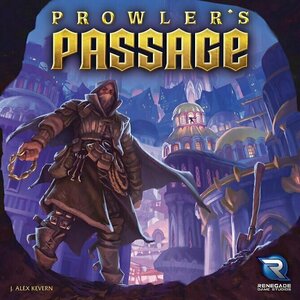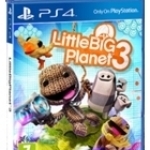Purple Phoenix Games (2266 KP) rated Cryptocurrency in Tabletop Games
Apr 2, 2020
You are the CEO of a fin-tech startup company. Leading a team of specialized experts, you will evaluate, trade, and mine different cryptocurrencies. Strategy is key, as you must stay ahead of the trend to maximize your earnings from the market. Can you solve the right algorithms and manipulate the network to help create the most wealth for your company? Or will you be scammed into buying worthless cryptocurrency? Play to find out!
Disclaimer: We were provided a copy of this game for the purposes of this review. This game is available to purchase, so the components seen in the pictures are what come with the game. I do not intend to rehash the entire rulebook in this review, but rather provide the basic ruleset and general gameplay overview of the game. Feel free to pick up a copy of the game directly from the publisher or your FLGS! -L
Cryptocurrency is a game of commodity speculation, action points, trading, and a little push your luck in which players are trying to amass the most amount of money over 5 rounds. To setup the game, place the Cryptocurrency Info Boards in the center of the play area, and place the Market Board next to them. Prepare and distribute the Rumor cards, and create the Ongoing Transactions deck. Each player receives a player reference card, 3 Intern Expert cards, and a total of 6 Wonga (the currency of the game). The game is now ready to begin! Each round is broken up into 4 phases: Prep, Action, Upkeep, and Rumor. During the Prep phase, each player (in turn order) must draw a Rumor card, and may hire a new Expert or take a loan. Experts are hired (purchased) from the Job Seekers pile, and often provide special abilities or increased Action Points. Hired Experts must replace one Expert from their existing team. Your team can only have 3 Experts, so choose wisely who to hire and fire! A loan can be taken to immediately gain 8 Wonga, but interest must be paid for the loan later in the round. After each player has performed these actions, play moves to the second phase.
During the Action phase, players take turns performing one of two actions: Mining or Trading. These actions are performed by spending Action points – each Expert offers a certain number of points to spend. Once you use an Action Point, that Expert is exhausted and can no longer work in this phase. To Mine, players choose one of the 4 available cryptocurrencies to mine (research), and will either Succeed or Fail in this endeavor. If you succeed, you create and earn coins from that specific cryptocurrency, as well as any extra money earned from completing ongoing transactions. If you fail, your turn immediately ends. To take the Trade action, players will either Buy or Sell coins to/from the Market. You are only allowed to buy/sell the same cryptocurrency each turn, and you may buy/sell up to 4 coins each turn. For every 4 coins bought, the Market Board shifts to increase that currency’s price by 1 Wonga. For every 4 coins sold, the Market decreases by 1 Wonga. Once every player is out of Action Points, this phase is over.
In the Upkeep phase, players refresh all Experts, pay interest on any Loans, or completely pay off a Loan. The final phase, Rumor, moves in counter-clockwise order. Players take turns adding their secret Rumor card to the Rumor Track of one of the 4 cryptocurrencies. The market values are adjusted based on the Rumors played, and any face-down Rumor cards will affect the end-game value of the currencies. Play then returns to the Prep phase, and continues until 5 rounds have been completed. Players determine which cryptocurrency was a scam, sell any remaining coins, and then count up their money. The player with the most Wonga is the winner!
I have to admit that Cryptocurrency surprised me. After reading the rules and getting the game setup, I was feeling a little overwhelmed. I was prepping myself for a complicated, quasi-educational game in which I would be relatively unengaged and going through the motions each turn. What I got, however, was the complete opposite. Yes, there is a lot going on in this game, but it offers so many different mechanics and strategies for success that you’re always thinking one step ahead. There’s the aspect of bluffing when it comes to Rumor cards and manipulating the market through those means, there’s drafting of new Experts and shedding your hand of lesser-powered cards, there’s push your luck in the Mining action as the more Action Points you spend, the more opportunity you have for success. There’s not one sure strategy to win, and you are changing and adapting on every turn. You also have to be paying attention to your opponents! Although there’s not really any direct player interaction, everything you do on your turn could throw a wrench in the plans of your neighbor. Can you figure out how they’re trying to play the Market? Or will you try to fly beneath the radar and throw them off your trail?
My biggest issue with this game has to do with components. The cryptocurrency boards and the market board all work together, but they are all their own separate components. So it just makes set-up/tear-down a little more involved because instead of laying out 1 big board and adding components to it, you have to lay out and populate 5 individual boards. It just makes it a little more tedious than I would like, but honestly it has no bearing on the gameplay at all. The quality of the components is pretty good overall, the artwork is tech-influenced and fun, and the cardboard coins are nice and sturdy. So all in all, a pretty good production quality.
So what are my thoughts on Cryptocurrency? I actually liked it more than I thought I would. It’s engaging and strategic, yet relatively simple enough that it doesn’t feel like too much of a brain burner. I am no cryptocurrency expert by any means, but I feel like after playing this game, I have a better understanding of it and how it works. So mission accomplished, Captial Gains Studio – you have a fun AND educational game here. Is it one I will pull out at every game night? No. But it’s one that I am looking forward to playing again in the future. Purple Phoenix Games gives Cryptocurrency an economic 8 / 12.
Purple Phoenix Games (2266 KP) rated Prowler's Passage in Tabletop Games
May 19, 2021
Prowler’s Passage is a 2-player game of area majority, route building, and set collection in which players are trying to plunder the city and amass more wealth than their rival thief. Played over a series of rounds, players take turns building a passage, collecting items, and gaining influence over certain city districts. To setup the game, place the control track between the 2 players, and randomly select and place 6 board hexes as described in the rulebook. Place 3 random Achievement cards face-up next to the control board. Place the Statues and Control markers in their corresponding starting spaces, populate the board with item tiles, and each player receives 13 passage sections in their chosen color. The game is ready to begin!
On your turn, you will perform 3 actions, beginning with placing a passage. Take a passage section from your supply and place it on any pathway on the board that has an item tile on it. It is important to note that you can place your passages anywhere on the board, as long as there is an item tile in that space – your passages are not required to create a continuous, unbroken pathway. After placing your passage, collect the item tile from the pathway where you just placed your passage. Finally, each pathway is adjacent to 2 city districts. Move the Control markers for the corresponding adjacent city districts one space toward your side of the control track. Play moves on to your opponent, and the game continues as such. There are 2 scoring phases, one in the middle of the game, and the other at the game’s end. You score points for continuous passages, statues collected, sets of items gathered, city districts (if you have majority control), and fulfillment of achievement cards. All scoring items are worth different point values, so check the rulebook for the specifics of how everything is scored. At the end of the game, total up points from both scoring phases, and the player with the most points is the winner!
For a small, 2-player only game, Prowler’s Passage packs quite the punch. It is essentially a tug-of-war between players as they try to gain control of the 5 city districts and amass the most wealth. But instead of using brute strength to pull the districts in your favor, you use strategy. Every passage you put into play moves the adjacent 2 city district Control markers one space in your favor. So you have to strategize what passage placements are the most beneficial for your overall scoring, and most detrimental to your opponent. And since passages do not need to be played in a continuous line, your strategy can be more open-ended instead of limiting you to only certain future placements. Aside from gaining control of the city districts, you also receive points for collecting sets of item tokens. That’s just another layer of strategy added that takes this game to the next level. Not only do you have to decide what passage placements are best for you, you need to figure out what item tokens you want and if you are willing to risk letting go of certain district influence in order to complete an item set.
One thing that I love about Prowler’s Passage is that it is a game of open information. There are no hidden objectives, secret powers, or unknowns overall. Everything is laid out and plainly visible to both players. You can see exactly what your opponent is doing, and they can see what you are doing. So your strategy must be two-fold – putting yourself in a good position, while also attempting to stifle the progress of your opponent. Can you anticipate the strategy of your opponent, or will they be able to keep you off their trail? And as the game progresses and passage placement options dwindle, you really have to kick your strategy into overdrive to squeeze out as many points as you can before the end of the game!
The biggest drawback for me regarding this game is the actual scoring. Each city district is scored in a unique way unlike any of the other districts. So when I play, I find myself referring back to the rulebook during both mid-game and end-game scoring to check how to score everything. It’s not as intuitive as I would like, and it just slows the game down when tallying up scores. The other thing that can be a drawback is that since there are so many strategic options, it could lead to some serious AP in players. Every move affects several other factors, so you really have to be thinking deeply and in advance for each of your turns. Which is cool – I love trying to figure out the best strategy for success. But at the same time, it could bring the game to a screeching halt as one player must decide between so many options. It’s supposed to be a quick game, but overthinking is definitely a possibility.
The components of the game are nice and sturdy overall. The colors of some components don’t match perfectly, and that can lead to some confusion. The Purple city district has a nice Purple meeple, but the corresponding tile sections look more Pink to me. The Brown meeple is fine, but the city tiles have some pinkish hues. Just a little mismatching, but nothing that an edited printing can’t fix!
Overall, I would have to say that I really like Prowler’s Passage. There are many strategic options and ways to score points, and you must be able to adjust your strategy on the fly to answer back to your opponent. There is no single right strategy, and discovering different options is fun for me. Aside from the color matching in the components, and the possibilities for serious AP, this game is a great one. Enough strategy, scoring options, and player interaction to keep both players engaged, but not so difficult that you have to devote an entire game night to play one single game. I’m glad that I was able to get Prowler’s Passage in my collection, and it is high on my 2-player-only games list. Purple Phoenix Games gives it a sneaking 9/12.
Sarah (7800 KP) rated Little Big Planet 3 in Video Games
Dec 12, 2017 (Updated Dec 12, 2017)
The main story mode is lengthy and full of unique and interesting levels that vary in difficulty. Sackboy and his friends are such adorable and silly characters to play, and it’s great to have the option to play as all of them as they each have their own unique abilities. The graphics too are very impressive and full of life and colour. And it has the voices of Hugh Laurie and Stephen Fry to make it even better.
The best thing about this though is the multiplayer story mode. My boyfriend and i had hours of fun playing this together, and playing with someone else gives it an extra level of difficulty as well as frustration, especially if that person keeps dying and you don’t...
Conversely though, some of the multiplayer options are the downside to this game. Some of the areas in story mode are only accessible with a certain number of players, sometime 3/4 and how often do you play with that many people? It means you can’t complete all of the game.
Still that aside, this is a fantastic couch co-op game for all ages.

Laser League
Video Game Watch
Brace yourself for Laser League, the new last-word in high-speed, futuresports team action. Blink...
sports arcade
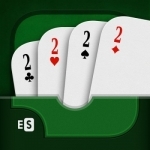
President (King & Scum, Ahole)
Games and Entertainment
App
Play the famous President card game, also known as King & Scum, Scum, Ahole, on your iPhone, iPod...

KickPower - Soccer Ball Speed Detector
Health & Fitness and Sports
App
How hard can you kick a soccer ball? The world record exceeds 124 MPH (200 km/h). Do you think you...
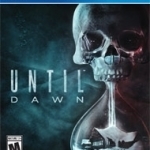
Until Dawn
Video Game
Until Dawn is an interactive drama survival horror adventure video game developed by Supermassive...
Until Dawn
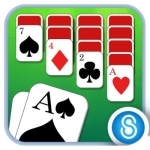
Solitaire Classic Card Game™
Games and Entertainment
App
Welcome to the best looking Solitaire game in the App Store! Play FREE forever! Classic Solitaire...

Metal Crusher - Monster Truck Battle Online
Games and Entertainment
App
WARNING: Here comes the monster! Take a battle with a 3D armed truck right now! Combined with racing...

Unrivaled (Hockey Ever After #3)
Book
People say there’s a fine line between love and hate. If you ask Grady Armstrong, the line’s as...

